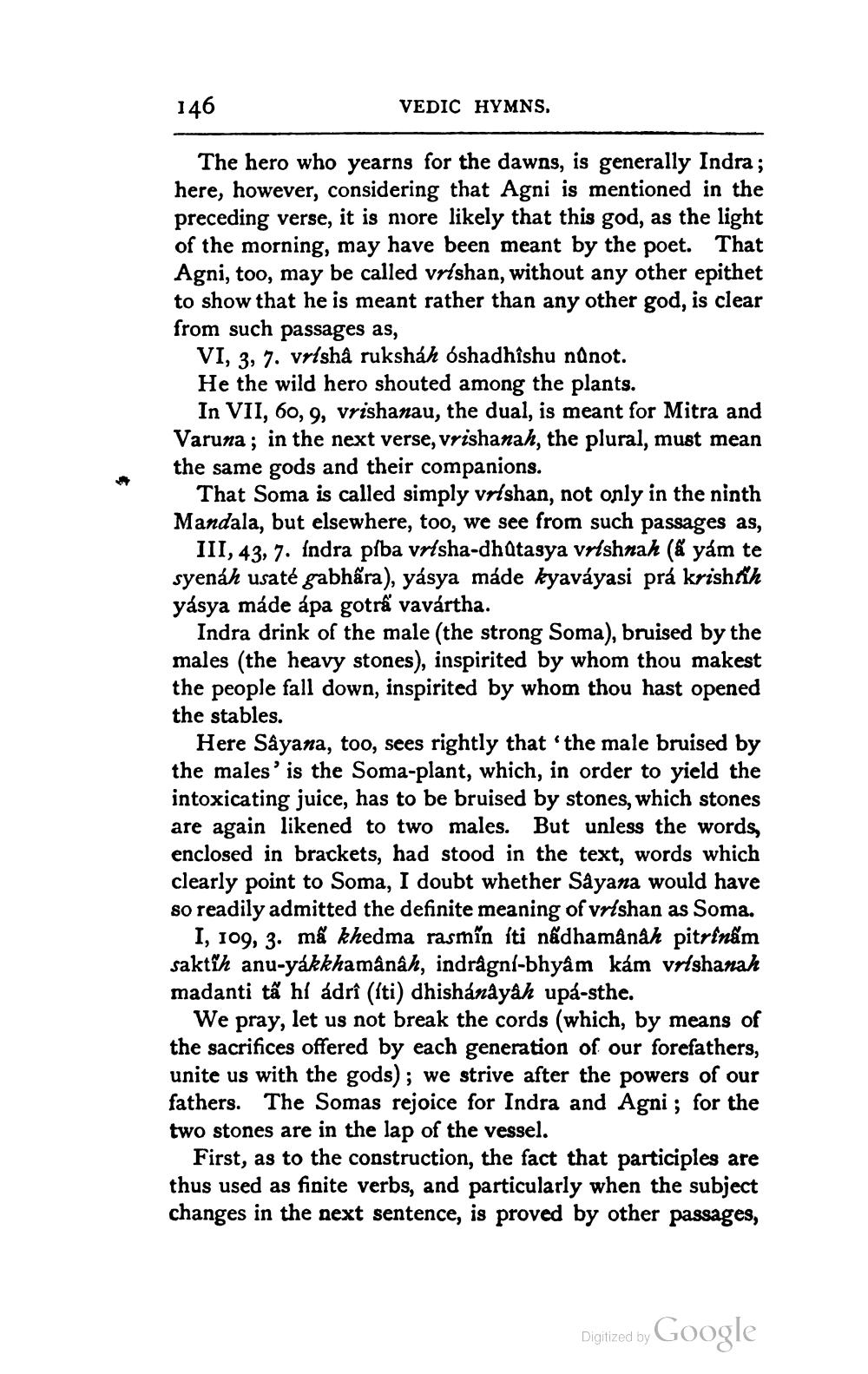________________
146
VEDIC HYMNS.
The hero who yearns for the dawns, is generally Indra; here, however, considering that Agni is mentioned in the preceding verse, it is more likely that this god, as the light of the morning, may have been meant by the poet. That Agni, too, may be called vrlshan, without any other epithet to show that he is meant rather than any other god, is clear from such passages as,
VI, 3, 7. vrlsha ruksháh oshadhishu nanot. He the wild hero shouted among the plants.
In VII, 60, 9, vrishanau, the dual, is meant for Mitra and Varuna; in the next verse, vrishanah, the plural, must mean the same gods and their companions.
That Soma is called simply vrlshan, not only in the ninth Mandala, but elsewhere, too, we see from such passages as,
III, 43, 7. Indra pība vrlsha-dhatasya vrishnah (& yám te syenáh usaté gabhấra), yásya máde kyaváyasi prá krishtih yásya máde ápa gotră vavártha.
Indra drink of the male (the strong Soma), bruised by the males (the heavy stones), inspirited by whom thou makest the people fall down, inspirited by whom thou hast opened the stables.
Here Sayana, too, sees rightly that the male bruised by the males' is the Soma-plant, which, in order to yield the intoxicating juice, has to be bruised by stones, which stones are again likened to two males. But unless the words, enclosed in brackets, had stood in the text, words which clearly point to Soma, I doubt whether Sayana would have so readily admitted the definite meaning of vrishan as Soma.
I, 109, 3. mã khedma rasmîn iti nadhamanah pitrinam saktih anu-yákkhamânâh, indragni-bhyam kám vrlshanah madanti tã hí ádrî (Iti) dhishanàyâh upá-sthe.
We pray, let us not break the cords (which, by means of the sacrifices offered by each generation of our forefathers, unite us with the gods); we strive after the powers of our fathers. The Somas rejoice for Indra and Agni ; for the two stones are in the lap of the vessel.
First, as to the construction, the fact that participles are thus used as finite verbs, and particularly when the subject changes in the next sentence, is proved by other passages,
Digitized by
Digitized by Google




